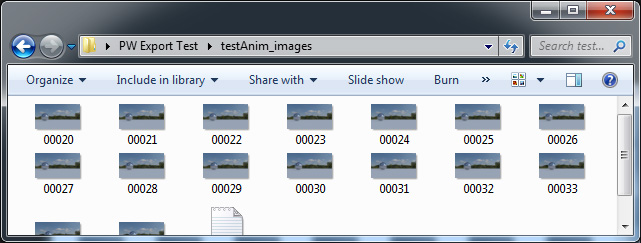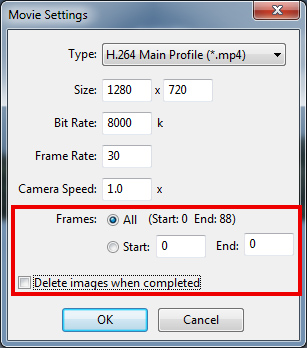Movie Export Dialog - Changes in ProWalker GPU
Exporting movie files from ProWalker GPU is much the same as it was in older versions of Podium Walker, however several changes and additions have been incorporated into the ProWalker to improve the export workflow.
1. ProWalker GPU now saves incremental images.
While the render process is ongoing, every frame of your animation is stored as a separate .jpeg image. This is primarily meant to safe-guard against ProWalker or SketchUp crashing during the render process, and prevents the need to re-render frames that have already been completed. Images are stored in a new folder with "_images" appended to the directory name.


Save or delete when finished - Use the check-box at the bottom of the export dialog to specify whether you'd like ProWalker to save or delete incremental images when Podium Walker finished rendering and exporting your video file.
2. Frame range - Specify beginning and end frame.

If you need to resume rendering from a specific frame, or want to clip frames from the beginning or end of your animation, you can now specify a custom frame range in the export dialog.
For example: If you're rendering a 250 frame video, and Podium Walker previously crashed during the render process, you can now resume rendering at the exact point where ProWalker left off.
- Check the _images folder to find the last frame that ProWalker saved before crashing. For the sake of this example, we'll say frame 155.
- Set start frame: Specify the frame you want ProWalker to start (or resume) from.
- Set end frame: Specify the final frame you want ProWalker to render.
- Delete images when completed: Check here if you want ProWalker to delete the incremental folder when rendering has finished. Leave this unchecked if you are resuming a previously failed render.
3. How do I create a video out of incremental images?
In the event that ProWalker GPU fails to finish exporting your .mp4 video file, you may still create a video file from the available .jpg image sequence.
There are several applications capable of stitching an image sequence into a final video file:
- Windows Movie Maker - No longer installs on all Windows machines, but still free to download. Recommended free option for Windows; watch here to see how to stick images to video in Movie Maker.
- Quick Time Pro - Very easy to achieve with Quicktime Pro, though the software is not free for Windows users.
- Adobe After Effects and Photoshop - Both have tools for stitching images to video; this is not necessarily a recommended option unless you're already using one or the other.